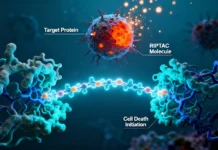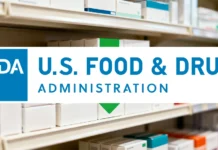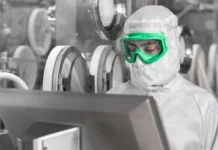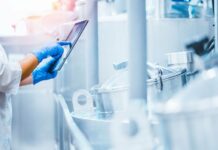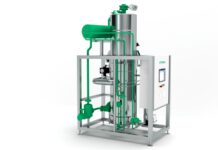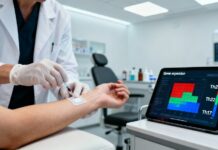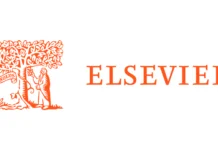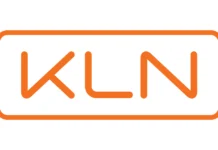It’s important to note that pharmaceutical packing is often overlooked in the complicated world of modern healthcare. However, it is an important part of keeping vital drugs safe. Plastic has been used in this way for a long time because it is stable and has many good qualities, such as being sterile, long-lasting, and chemically neutral.
But there is a big change happening in the way people think about plastic. As issues with plastic waste get worse, stricter environmental laws are put in place, and people’s views change, the pharmaceutical industry is under a lot of pressure to find long-lasting packaging options that are in line with its commitment to patient health.
Post-Consumer and Pre-Consumer Regrind (PCR) is a solution that is becoming more popular. It gives used plastics a new use by making new packaging from recycled plastics from a variety of sources, such as end-users and production waste. As caring for the environment becomes more important, PCR is a useful way to lower the damage that medication packing does to the environment without affecting the main goal of keeping patients safe.
In this section, we will talk more about the practical side of using PCR materials in pharmaceutical packaging. We will look at their pros and cons, as well as why a demand-driven, responsible, and practical approach is going to be so important in the quest for sustainability. This journey is about finding useful ways to fix the environmental problem caused by pharmaceutical packaging so that it is less useless without sacrificing the main goal of the business, which is to protect patients’ health.
This is what PCR elements are. How can they help the environment?
Pre-consumer regrind, also known as post-industrial recovered (PIR) material, is waste from factories that is reused to make recycled goods or packaging. This waste includes off-cuts, scraps, and rejects.
When consumer trash is kept out of landfills and instead used to make plastic boxes and other goods, this is called post-consumer regrind.
As people become more aware of environmental problems and oil costs rise, the PCR market is being driven by these two factors. This is making more people want to use PCR all over the world, and many companies are eager to get their hands on this new technology.
Even though PCR is good for the environment in some ways, like lowering trash and manufacturing carbon footprint, its benefits make it even more appealing. For example, PCR lowers the costs of making things because it uses fewer, more expensive, and brand-new materials.
When companies invest in sustainable packing, they are likely to see better returns on their money because of higher demand and lower production costs.
Also, manufacturing cost cuts will keep happening, which will be good for healthcare services. For example, data from the London School of Economics shows that the rising cost of more than 5% brand-name medicines every year threatens the NHS’s ability to keep its finances in order. This is because of the high cost of new, expensive drugs.
Additionally, this will help a business’s brand and win points with customers who care about the environment. This will help the business build an image for putting customer needs first and ensuring long-term survival.
But strict rules in the pharmaceutical industry mean that fresh plastic can never be ruled out. This is to make sure that both patients and the purity of medicines are protected. PCR does, however, offer a way for the pharmaceutical business to lessen and deal with its part in the plastics problem that the world seems to be in.
As more and more people start using PCR, it’s important to remember that sustainable methods include more than just using raw materials. Holistic methods for sustainability include new ways of designing things, smart ways to use resources, and recycling programs.
People who buy things and other interested parties need to all agree that PCR is not the only way to solve the problem of plastic waste. There are limits to what can be done because of the unique complexity of the pharmaceutical business.
Things to think about, limits and a sensible way of doing things
Unfortunately, the pharmaceutical industry is one of the biggest polluters in the world. As a result, it has to strike a delicate balance between meeting the strict health and safety requirements set by government agencies and meeting the expectations of modern consumers who care about the environment.
It’s important to note that while other industries can choose to put design, looks, and sustainability at the top of their list of priorities when it comes to packing, the pharmaceutical business has to put health and safety first.
After this, a problem that comes up all the time in the medicine packing business is shown. There are a lot of problems with PCR-derived packing, like lower quality, inconsistent processes, limited uses, and contamination. These problems make it impossible to use as a generally good packaging option.
When PCR is used in the pharmaceutical field, this possible lack of clarity means that the background of the material is either unknown or can be tracked. This kind of doubt restricts the product’s uses, which means it can’t be used for many medicinal products, like ones that are put into the bloodstream.
PCR materials are becoming more popular as a way to solve the plastics problem because the packaging industry needs them more and more. However, makers are having a hard time getting enough of them.
This lack could also be because a lot of people don’t know how to recover plastics, including medicine packages. In the UK, 1.85 billion pieces of plastic products are thrown away every week instead of being recovered.
This lack of public knowledge not only adds to the huge problem of plastic waste around the world, but it also makes it hard for companies that make PCR to get enough supplies. When it comes to closing the gap between demand and supply for PCR, it is very important to address these kinds of information gaps through broad public awareness efforts and training programs.
Also, trash that is contaminated with reusable plastics is useless because it can’t be used to make PCR. They are food scraps and oils that have not been properly removed before people return them, which can make them dirty. People today are short on time and live in a culture that values ease and quick gratification. Because of this, it’s not important to wash the packaging trash before reusing it.
When looking for what seems like the best way to solve a problem, it’s important not to lose sight of the practical side of things. Businesses are also focused on reusing common materials because of the lack of PCR supplies.
Responsible rules must be put in place for the use of PCR that take ecology into account. To begin, it is important to understand the waste system, which means that preventing garbage and not having to deal with it should be given top priority. In reality, sustainability can’t be forced on designs that are already in place. Instead, designs need to be rethought from the very beginning, when they are first created, to include methods of reuse and recycling like PCR.
In order to do this, recovered materials need to be developed at a level that matches the current size and supply of the market. This then lowers any risks that might come up when trying to meet the growing demand for recovered plastic, but it also makes more new plastic to make up the difference.
It is important to remember that there is a way to reach an agreement. Partially recycled packaging, like medicine bottles made of 30% recycled plastic, still helps fight plastic pollution and has some benefits that are greater than 100% recycled packaging in some situations.
When thinking about sustainability in packing, it’s important to look at the whole life cycle of all the materials used to make sure that you can compare them fairly. This way, you can figure out how to maintain sustainability project by project.
Taking a full method to make the future of packing more eco-friendly
PCR is used in medicine packing, which gives people involved a way to reach their sustainable goals.
Chose materials based on how harmful they are to the environment and how easily they can be remade or recycled in new goods with as little waste as possible. This is the first step in being environmentally friendly. The point is that this needs to be thought about right away.
The pharmaceutical business can help fix the lack of PCR and build a path for future use. They can also help make packing from PCR. Pharmaceutical packaging can be recycled in many situations, but there isn’t a lot of information out there about where and how to recycle medicine packing.
Making people more aware of this issue will actually encourage the right way to recycle pharmaceutical packaging, which will increase the supply of PCR and encourage the production and use of PCR goods across the industry.
Participation in recycling programs and investments from stakeholders show a further commitment to sustainability, which makes consumers feel better about the sector.
Lastly, the pharmaceutical business can clean up its act by using a circular design method that makes designs more sustainable and lighter. In turn, this lowers the carbon footprint of goods, putting an emphasis on speed in production and continuing to support and take part in research and development.
A wave of innovation has ushered in bio-based packaging as the industry’s new frontier. The market is expected to expand at a 12.5% CAGR through 2032, reaching USD 25.86 billion.
Plant-based materials like polylactic acid (PLA), polyhydroxyalkanoates (PHA), and made recyclable pulp like sugarcane pulp are used to make bio-based packaging. Overall, though, it is important to understand that bio-based packing is not the only way to solve the problem of package waste we face today.
Even though bio-based packaging comes from natural energy, like plants, instead of fossil fuels, that doesn’t mean it will always break down or stick together. Because they need certain things in industrial composting plants to break down, bio-based packaging can’t be recycled at home unless it has been approved as home compostable.
Because of this, consumers aren’t properly managing bio-based packing trash, which just adds another rock to climb.
Getting regulators to work together more on sustainable packaging
As the pharmaceutical industry moves forward with PCR-based packing solutions for more environmentally friendly reasons, governmental cooperation is an important issue that needs to be taken into account.
Although it is important to make sure that these new products meet strict health and safety standards as well as environmental goals, it is not an easy task.
Concerns about the possible risks of using PCR for pharmaceutical packaging, such as contamination and lack of consistency, need to be talked about. Regulators and people in the pharmaceutical business can work together to create standards and quality control measures that make sure PCR in pharmaceutical packaging is safe and reliable.
Companies that make medicines will have to work together with government agencies to make sure that there are clear rules and instructions for using PCR in packing. That being said, this collaboration is very important for getting past the problems that come with using recycled materials in fields where patient safety is very important.
So, it is very important for governing bodies, the pharmaceutical business, and recycling groups to work together to make a much better way for the safe use of PCR in pharmaceutical packaging. Creating industry-specific guidelines and standards for PCR use, testing, and quality control could help solve some of the problems that are stopping more people from using recycled materials.
The pharmaceutical industry can speed up the approval process for PCR by building strong relationships with regulatory bodies. This will cut down on the time and resources needed for testing and proof. This will not only speed up the use of eco-friendly products, but it will also make the change to more eco-friendly habits easier.
The pharmacy industry can become a leader in this area when it comes to ownership and new ideas, setting examples for other industries to follow. Pharma firms can figure out how to use sustainable packaging while also meeting the highest standards for patient safety if they work together with regulatory groups. This creates a situation where everyone benefits: the PCR can become a change agent, leading to less plastic waste and less damage to the environment while also protecting the safety of important medicines.
There is still a long way to go because each solution has its own problems. However, the future of the cleaner pharmaceutical packaging business looks bright because more money is being spent on sustainability research and people are becoming more committed to finding better solutions.




